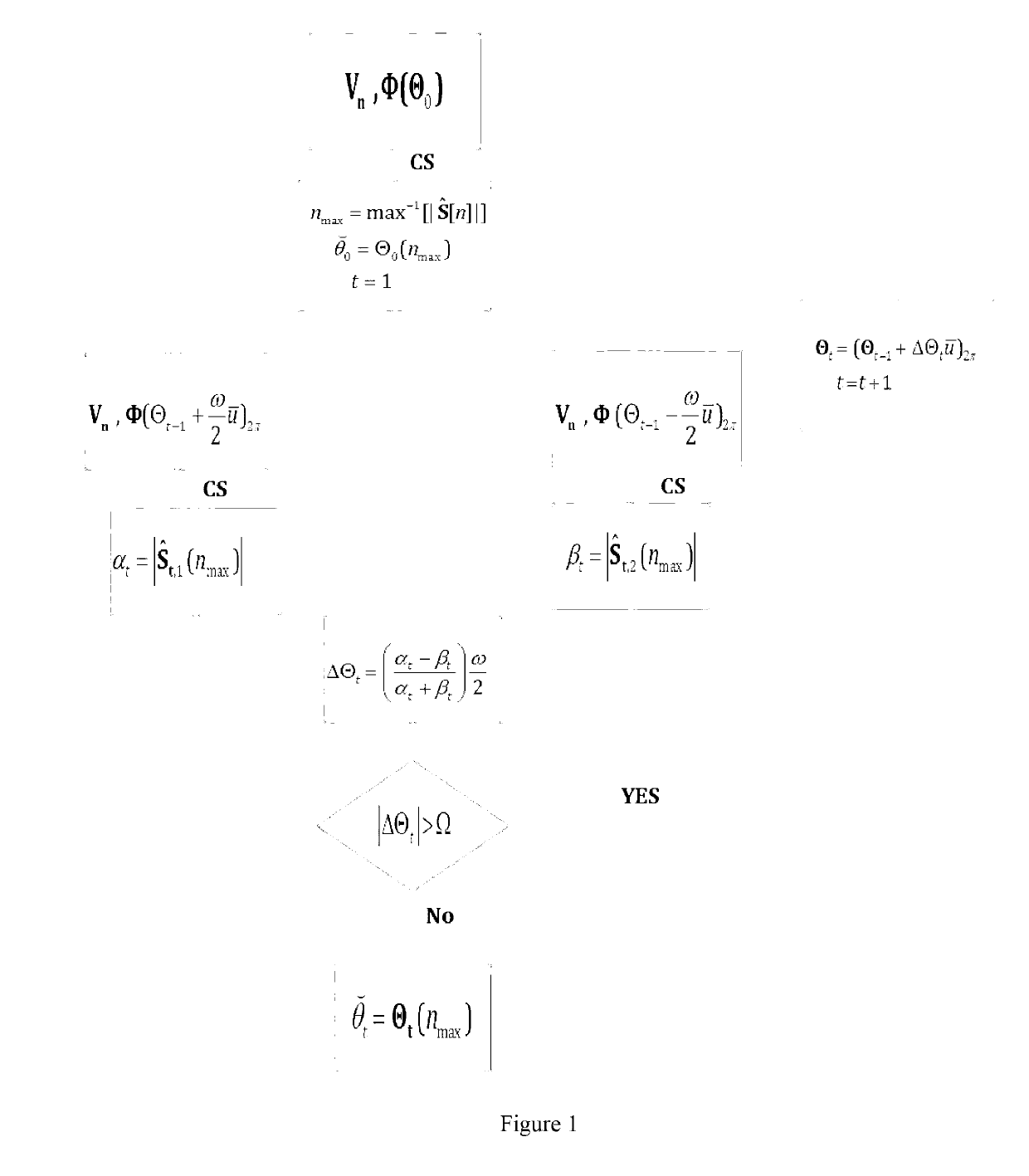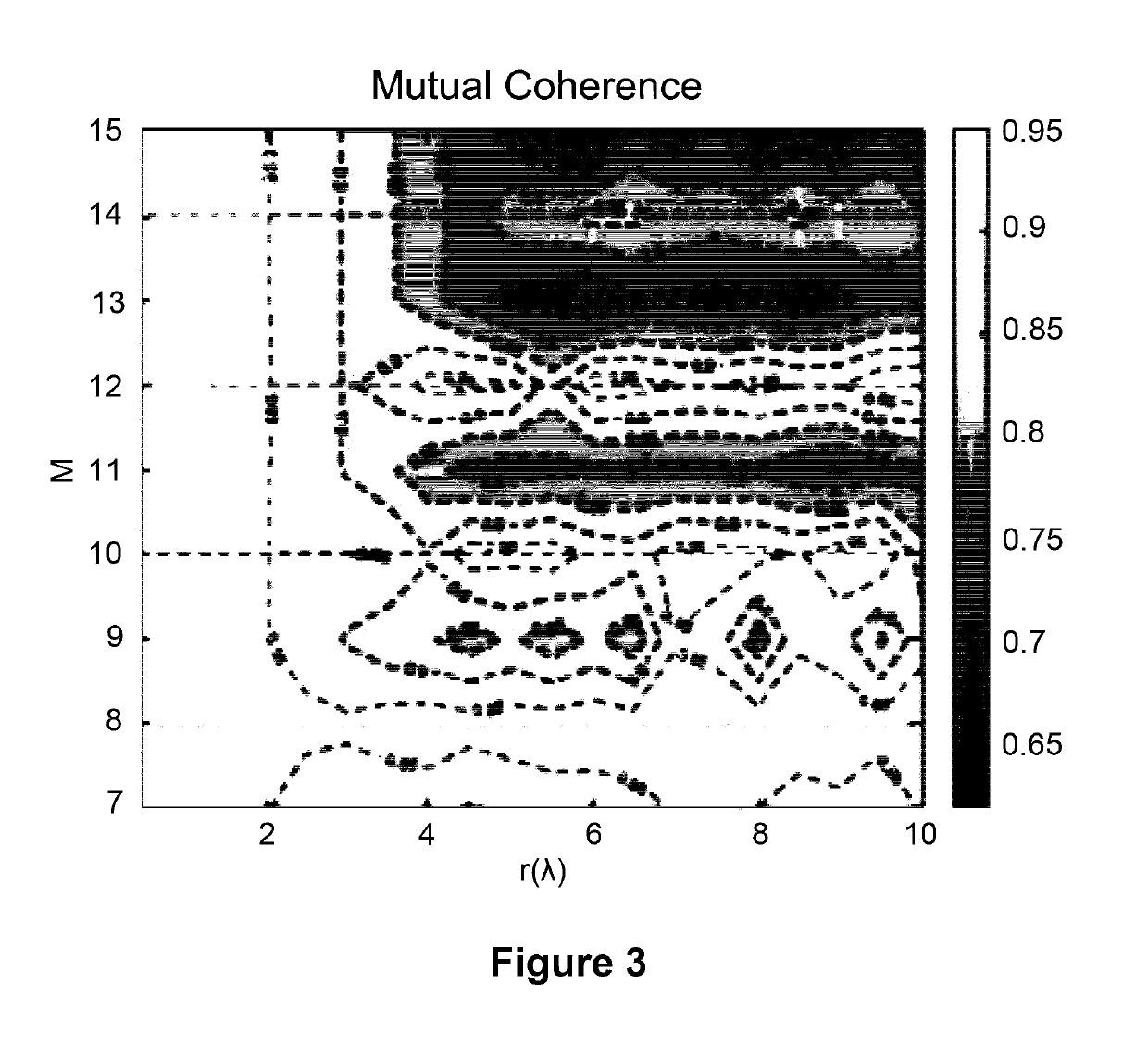Direction of arrival estimation
a technology of direction and arrival, applied in the direction of direction finders, diversity direction finding, instruments, etc., can solve the problems of increasing the throughput of the overall network, uninterrupted communication between users, and doa problems
- Summary
- Abstract
- Description
- Claims
- Application Information
AI Technical Summary
Benefits of technology
Problems solved by technology
Method used
Image
Examples
example process
[0215 Flow
[0216]FIG. 1 shows an example process flow for determining an estimated direction of arrival of a signal at an array of M antenna elements. An initial grid of N candidate directions of arrival is defined, with N greater than M to result in a sparse problem. The grid is rotated in both directions and an angular discriminant determined based on the rotated grid. The angular discriminant controls the extent of rotation of any subsequent iterations. An estimated direction of arrival is output when a threshold condition is met.
[0217]FIG. 2 shows another example process flow for determining an estimated direction of arrival of a signal at an array of M antenna elements. An initial grid of N candidate directions of arrival is defined, with N greater than M to result in a sparse problem. After an initial compressive sensing determination, the grid is rotated and the compressive sensing determination repeated. An angular discriminant is determined based on the solution vectors. The...
PUM
 Login to View More
Login to View More Abstract
Description
Claims
Application Information
 Login to View More
Login to View More - R&D
- Intellectual Property
- Life Sciences
- Materials
- Tech Scout
- Unparalleled Data Quality
- Higher Quality Content
- 60% Fewer Hallucinations
Browse by: Latest US Patents, China's latest patents, Technical Efficacy Thesaurus, Application Domain, Technology Topic, Popular Technical Reports.
© 2025 PatSnap. All rights reserved.Legal|Privacy policy|Modern Slavery Act Transparency Statement|Sitemap|About US| Contact US: help@patsnap.com



